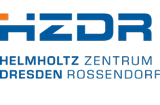- HZDR
- Institutes
- Startpage
- Dresden High Magnetic Field Laboratory
- Fluid Dynamics
- Ion Beam Physics and Materials Research
- Radiation Physics
- Radiooncology - OncoRay
- Radiopharmaceutical Cancer Research
- Resource Ecology
- Helmholtz Institute Freiberg for Resource Technology
- CASUS - Center for Advanced Systems Understanding
- Institute of Theoretical Physics
- Department of Research Technology
- Department of Information Services and Computing
- Research
- Press & News
- Career
- Technology Transfer
- Startpage
- Contact
- Events
- HZDR Innovation Contest
- Helmholtz Innovation Labs at HZDR
- AI research and Innovation Lab
- Technology Services
- Funding Opportunities
- Transfer Highlights & Spin-Offs
- HZDR Innovators School
- Transfer Projects
- Equipment use
- Transfer Strategy and Guideline
- HZDR Spin-off initiative
- Transfer@HZDR - Analysis und Benchmark
HZDR-WebCMS | 28.04.2024
Bautzner Landstraße 400, 01328 Dresden - Germany
Phone: +49 351 260 - 0
Email: kontakt@hzdr.de

